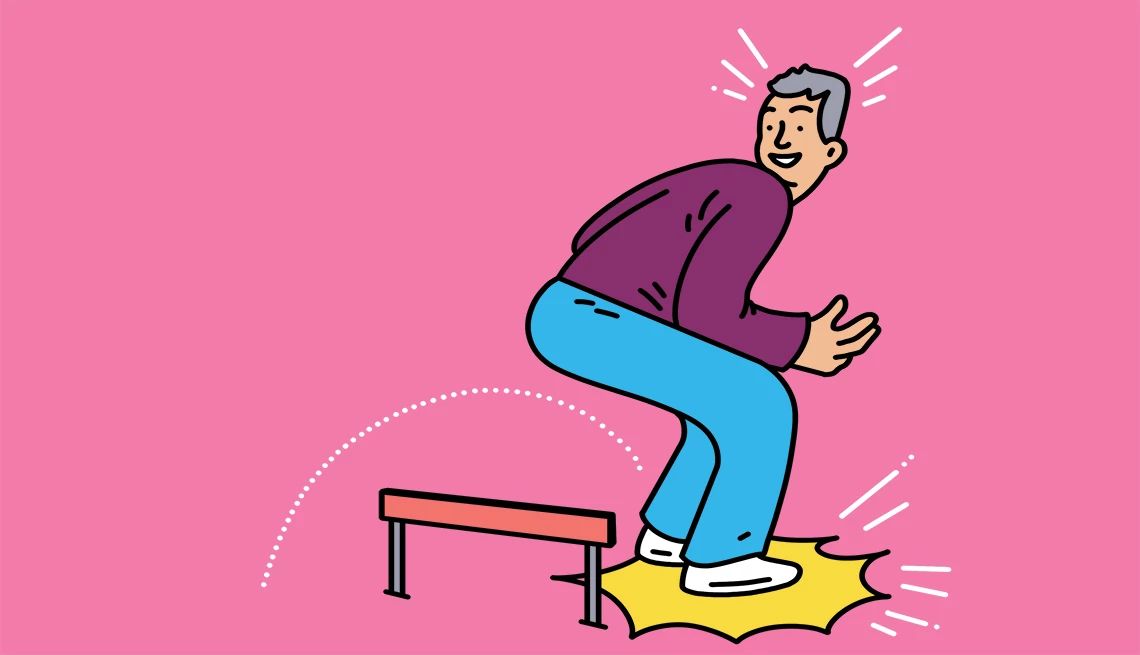AARP Hearing Center


Building healthy new habits can be transformative and lead to a more organized, healthy and fulfilling life. Yet it can feel daunting to set up fresh, positive routines. It requires a blend of consistency, motivation and strategic planning. Whether you’re looking to enhance your productivity, improve your physical health or foster better mental well-being, it’s crucial to understand the art and science of habit formation.
To help you get started, we’ve put together 25 methods you can use to create lasting change in your life. Find the ones that work best for you, then share your own advice at the bottom of the page.
1. Create a ‘why’ statement and write it down
It’s great to have a goal in mind, but it’s important to understand what motivates you to reach the finish line. Putting it in writing can help. “We all start a new healthy habit for a reason,” says Kelly Smith, a yoga and meditation teacher, host of the Mindful in Minutes podcast and author of Mindful in Minutes: You Are Not Your Thoughts, a guided meditation journal. “So when you embark on adding this habit to your life, write down why you are doing this.” Next, put the goals you wrote down somewhere prominent. According to Smith, if you see your words regularly, it will push you to press on, because understanding the deeper motivation behind your goals can make it easier to stay focused and committed.
2. Work backward to know your vision
Most people decide what they want to achieve first, but that can lead to disappointment, says positive-psychology expert Stella Grizont, author of The Work Happiness Method. She suggests flipping the script. Say you establish a daily exercise habit, but instead of being energized, you feel tired. In that situation, “decide how you want to feel and then work backwards to pick habits that support that vision of how you wish to feel,” Grizont says, noting that sometimes we set goals that seem like the right thing to do without considering if they are actually right for us.
3. Do a self-assessment
When making healthy lifestyle changes, you need a plan before you begin — and that requires some serious self-reflection. “Take some time to do a self-assessment and evaluate where you are now and where you ultimately want to be when it comes to your wellness goals,” says Reena Vokoun, a fitness instructor and Tedx speaker who helps individuals and companies incorporate fitness, nutrition, mindfulness and professional strengths into everyday life. “Then develop a specific plan to get there.”
4. Dive into the details
It’s easy to be vague about exactly when and where we’ll pursue our healthy habits, but it helps to get into the weeds, says Katy Milkman, a behavioral scientist, award-winning professor at the Wharton School, author of How to Change: The Science of Getting From Where You Are to Where You Want to Be and host of the Choiceology podcast. For example, if you want to start meditating regularly, choose the time and place that will cue you to do it (for example, 7 a.m. every weekday on the back porch) and set a reminder for yourself. “Research shows that when we create these kinds of cue-based plans and reminders, we’re far more likely to follow through on our best intentions,” she says.


5. Make it fun by playing games
Turn your health goals into a fun and engaging game by setting up challenges and rewards. Jennifer Cohen, author of Bigger Better Bolder: Live the Life You Want, Not the Life You Get and host of the podcast Habits & Hustle, says to track your progress with points or levels and reward yourself when you reach milestones. “Gamification [adding game elements to activities that aren’t games] maintains enthusiasm and commitment to your goals,” she says.
6. Make the habits bite-sized
Go big or go home isn’t the path to success. When you take on a new mindset and start to build repetition, begin with a bite-sized approach, says Gail Saltz, a psychiatrist, psychoanalyst, author of The Power of Different: The Link Between Disorder and Genius and host of the How Can I Help? podcast. “The longer, more difficult and/or complicated the habit is, the more difficult it is to adopt,” she says. Instead, break down something you want to do into smaller parts and incorporate each action one at a time. Then every week, add a new “bite” until you’ve reached the overall goal.
7. Consider a cash commitment
Not motivated by games? How about putting some money on the line to help you stick to your habit? For example, you might promise to send $25 to your least favorite politician if you don’t make it to the gym at least twice a week, says Milkman. If you need the help of a third party to hold yourself accountable, websites and apps like StickK.com, Forfeit and Beeminder let you set up cash commitments in various ways. (Just make sure you thoroughly understand how they work before you commit to a financial contract.)




































































You Might Also Like
Tips to Manage Your Stress
From scheduling stress and serenity to eating away the inflammation, here are ways to cope
Great Ways to Curb Sugar Cravings
From eating a protein-packed breakfast to ‘urge surfing,’ we have tips to stop craving sweets
Major Health Risks for People 50+
Research shows the odds of getting cancer and other conditions grow over time; Learn how to dodge them
Recommended for You